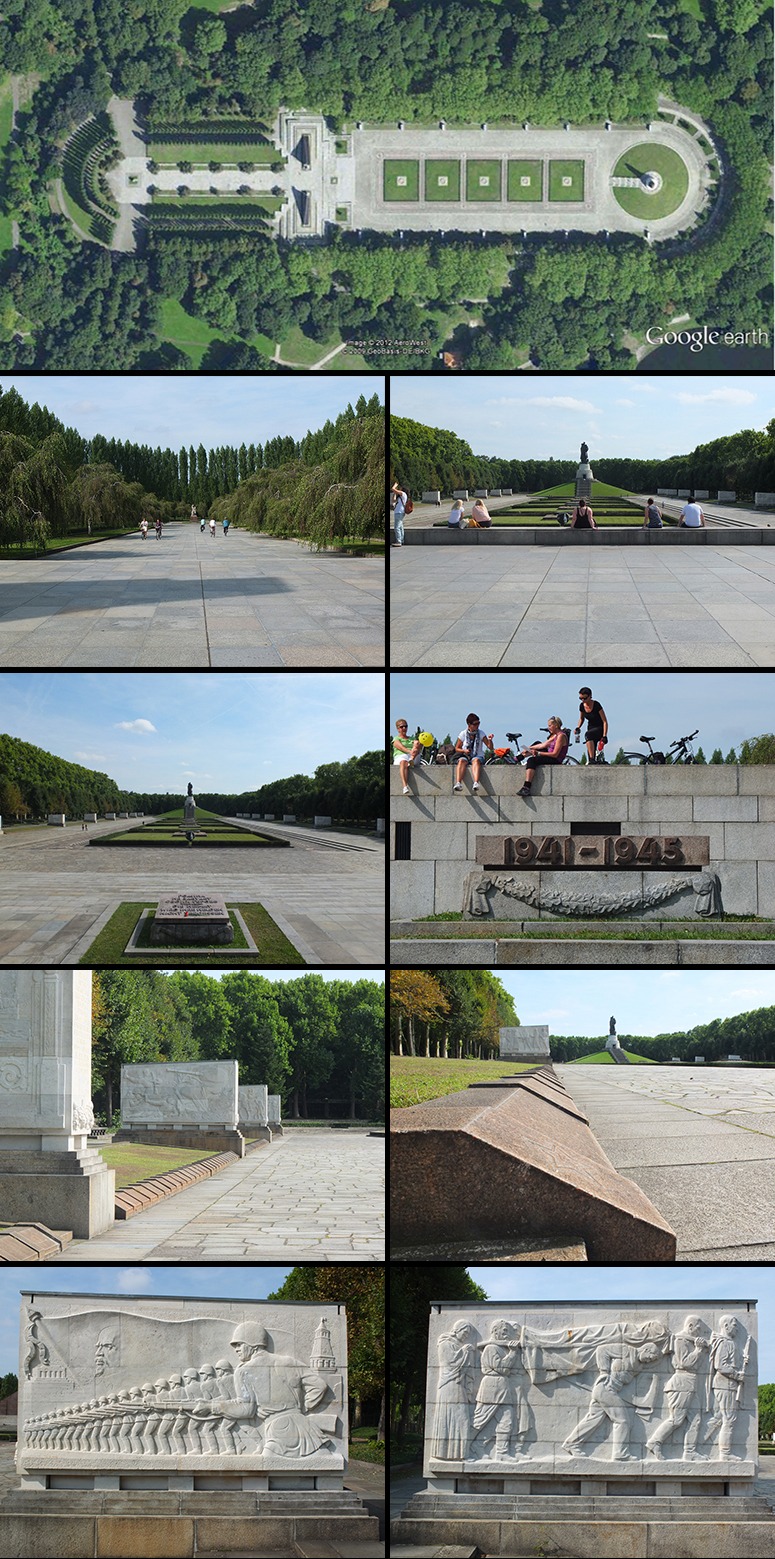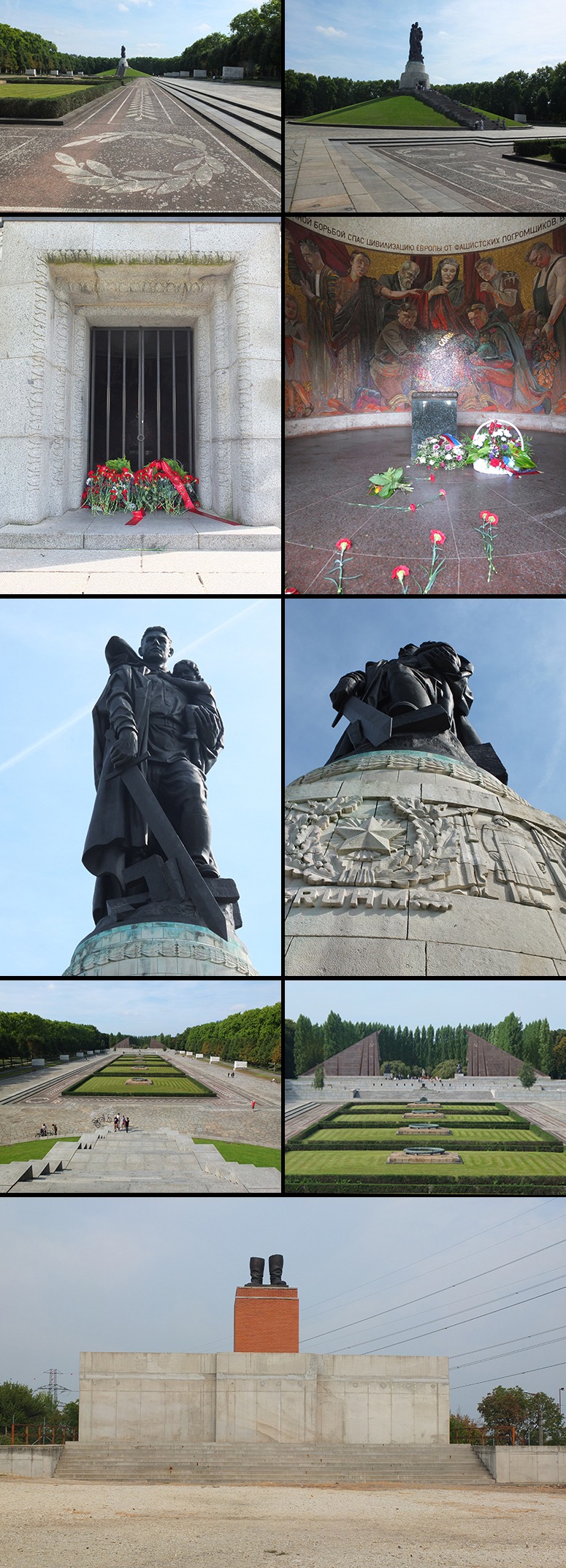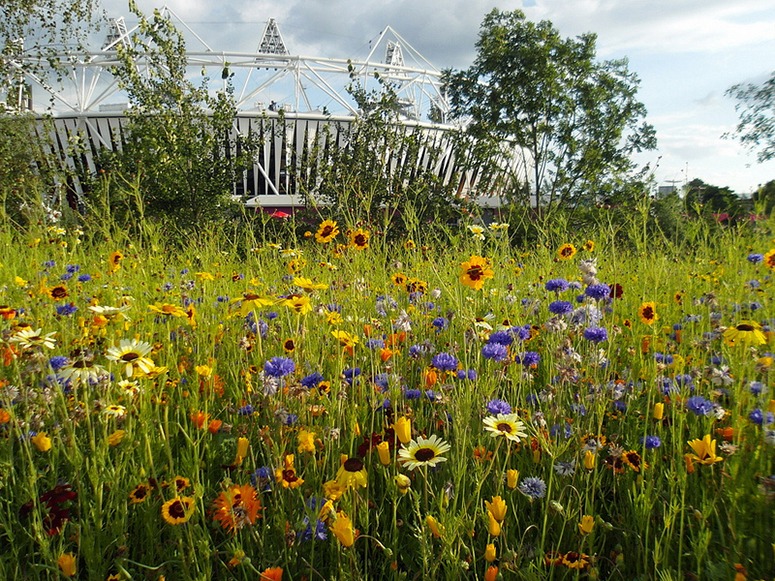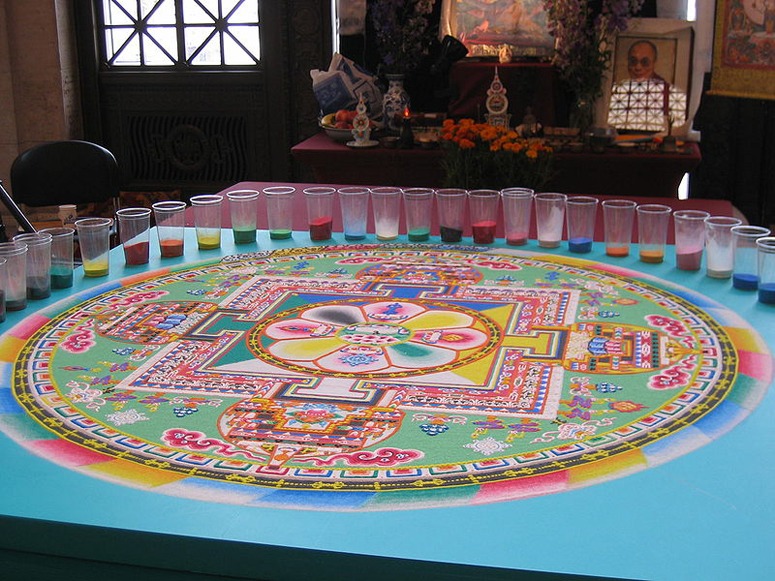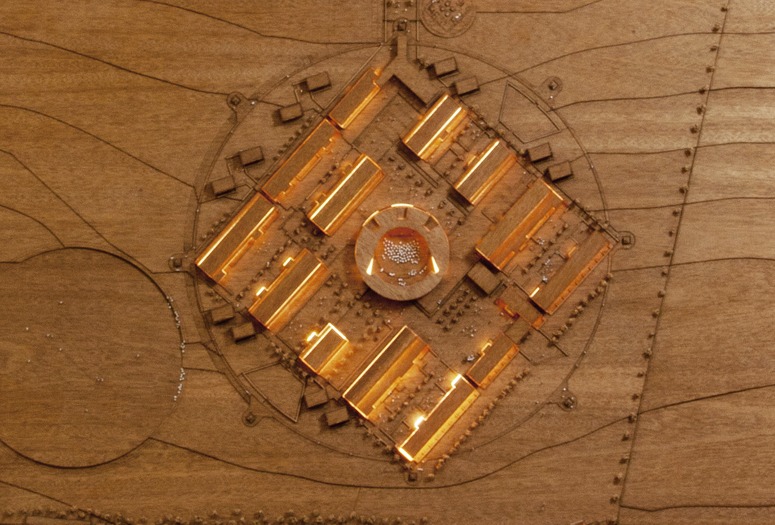Located in East Berlin, the Soviet Memorial in Treptower Park is the last resting place for 7,000 Russian soldiers. Planned in 1945, finished in 1949, the design was chosen in a competition to which 33 submissions were recorded. The winning design came from an artist’s collective that included the architect Yakov Belopolski, the sculpter Yevgeni Vuchetic, the painter Alexander Gorpenko and the engineer Sarra Valerius.The memorial was completely restored between 2003 and 2009, including the shipping of the 70 ton, 12 metre tall main statue – a Red Army soldier holding a child and standing over a shattered swastika – to the island of Rügen and back for repair. The memorial is ca. 570 metres long, 150 metres wide, and the main statue with its base mound stands 30 metres tall.
I am always very impressed with designs that rest heavily on trees for their main spatial definition. The Soviet Memorial relies on plane trees – now around 30 metres high – to define its outer boundary, with pleached limes – now around 15 metres high – used to step this scale down as an internal edge. There is an amazing avenue of weeping birches, now with crown diameters of up to 15 metres, planted at 25 metre centres. The western end of the axis is closed with lombardy poplars. One would look far today for a client that would be prepared to countenance a design that would first be ‘realised’ 40 years and more after its actual completion. As the point of the memorial is to convey everlasting glory upon the fallen soldiers, this aspect of the design makes it for me particularly moving.
The detailing of the memorial is superb. Students of landscape design should be encouraged to visit it to learn the importance of step, edge and paving details, and the enormous power of simplicity when ‘writ large’. It is a living memorial, fresh red carnations are strewn throughout on the statuary, and the room below the main statue is filled with flowers and garlands. There is a complete absence of religious symbolism.
Many people will not like this memorial, or this kind of political landscape. I was surprised myself that I found it very moving. Though most visitors were simply out enjoying the sun, one overheard many conversations on political themes, so it does seem that this piece of landscape design is still engendering debate.
The final image, included for contrast and to encourage comment, is taken in Budapest’s Memento Park, a collection of statuary from the Russian occupation of Hungary. The statue is of Stalin’s boots, all that remains of a massive sculpture of him that once stood in the centre of the city, after the population sawed off the rest of it and pulled it down.

